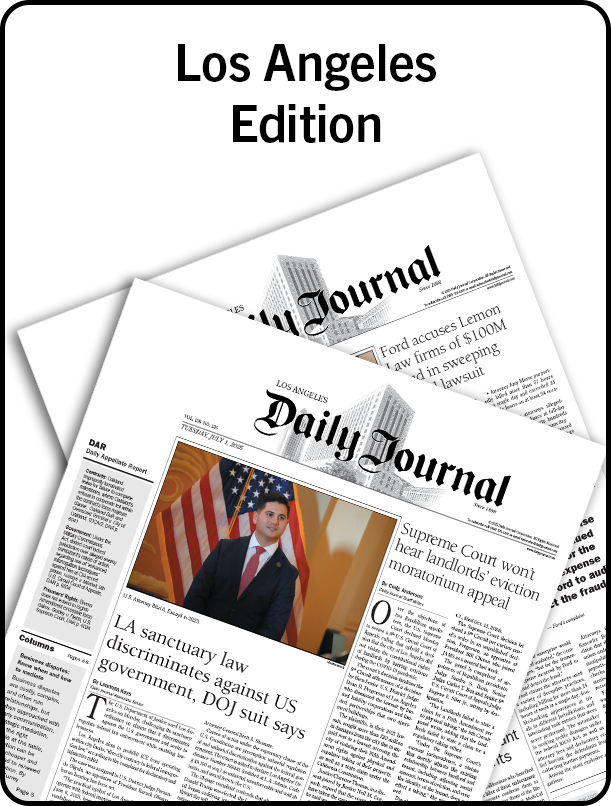Nov. 2, 2022
Important Revisions In Store For Micra
See more on Important Revisions In Store For Micra



Margaret M. Holm
partner
Tyson & Mendes LLP
2020 Main St. Suite 1100
Irvine , CA 92614
Phone: (949) 852-8200
Fax: (877) 546-3920
Email: mholm@tysonmendes.com
Santa Clara Univ School of Law
Jan. 1, 2023 will herald the beginning of a new era for medical malpractice cases. On that date, revisions to California's Medical Injury Compensation Reform Act (MICRA) will go into effect, thanks to Assembly Bill 35 (AB 35), which Governor Newsom signed into law on May 23. AB 35 institutes a change to the limit for noneconomic damages and attorney's fees in medical malpractice cases.
MICRA was instituted in 1975 and was intended to lower medical malpractice liability premiums for health care providers. This was effectuated by limiting exposures to tort claim damages. Since its inception, MICRA has stayed mostly the same.
Next year's changes will impact the landscape of liability insurance rates. These changes will increase pain and suffering payouts for plaintiffs:
Non-Economic Damages Recovery
Currently, the damage cap for pain and suffering in medical malpractice cases is $250,000 in California. In 2023, damages caps in the State for pain and suffering and wrongful death will increase to $350,000 (pain and suffering) and $500,000 (wrongful death) at first. Every year for the next ten years, these caps will continue to increase until they reach $750,000 and $1 million. After ten years has elapsed, the damage caps will be adjusted by 2%, due to inflation.
Contingency Fees
In addition to changing damage caps, AB 35 alters periodic payments for attorney contingency fees. Currently, attorneys can collect a percentage proportionate to the amount recovered. However, with AB 35, attorney fees are now linked to the stages of representation. Attorneys can collect 25% if recovered due to settlement before complaint or arbitration demand; 33% if recovered based on a "settlement, arbitration, or judgment after a civil complaint or demand for arbitration is filed"; and a discretionary percentage from the court if tried or arbitrated. AB 35, Sec. 2., 6156(a)(1)-(3).
Protections for Benevolent Gestures
AB 35 also adds protection for certain comments made during treatment. AB 35 makes privileged (and therefore not subject to "subpoena, discovery, or disclosure") the following: Id.
statements, writings, or benevolent gestures expressing sympathy, regret, a general sense of benevolence, or suggesting, reflecting, or accepting fault relating to the pain, suffering, or death of a person, or to an adverse patient safety event or unexpected health care outcome, in relation to in relation to an act or omission to act in the provision of or failure to provide health care, and made to that person or the family or representative of that person prior to the filing of a lawsuit or demand for arbitration...Id.
This is a positive change for the defense, as these statements, which might previously be used by plaintiffs to show fault, are now protected.
What Insurance Carriers and Their Counsel Can Expect
Since MICRA's inception, the cost of a medical malpractice suit has increased significantly. The California Medical Association supports the measure, stating it is:
an immense achievement that will usher in a new era of stability around malpractice liability in California for decades to come. This legislation will ensure that MICRA's essential guardrails remain solidly in place for patients and providers and ensure that our health care delivery system remains accessible and affordable for Californians, while providing fair compensation to injured patients. (California legislature passes MICRA modernization legislation, California Medical Association, May 17, 2022).
The insurance industry can expect increased litigation in the arena of medical malpractice with the increasing caps. Defense counsel should keep health care professionals and insurers advised of how these changes may impact litigation. This increase in litigation will change the evaluation of case values for both plaintiff and defense counsel. With increased damage caps and plaintiffs asking for more money, defense counsel will need to ensure they are giving an accurate defense number for jurors to use as an anchor.
Margaret M. Holm is a partner for the Orange County, Los Angeles, and San Diego offices of Tyson & Mendes LLP, and serves as chair of the firm's health care practice group.
For reprint rights or to order a copy of your photo:
Email
Jeremy_Ellis@dailyjournal.com
for prices.
Direct dial: 213-229-5424
Send a letter to the editor:
Email: letters@dailyjournal.com




